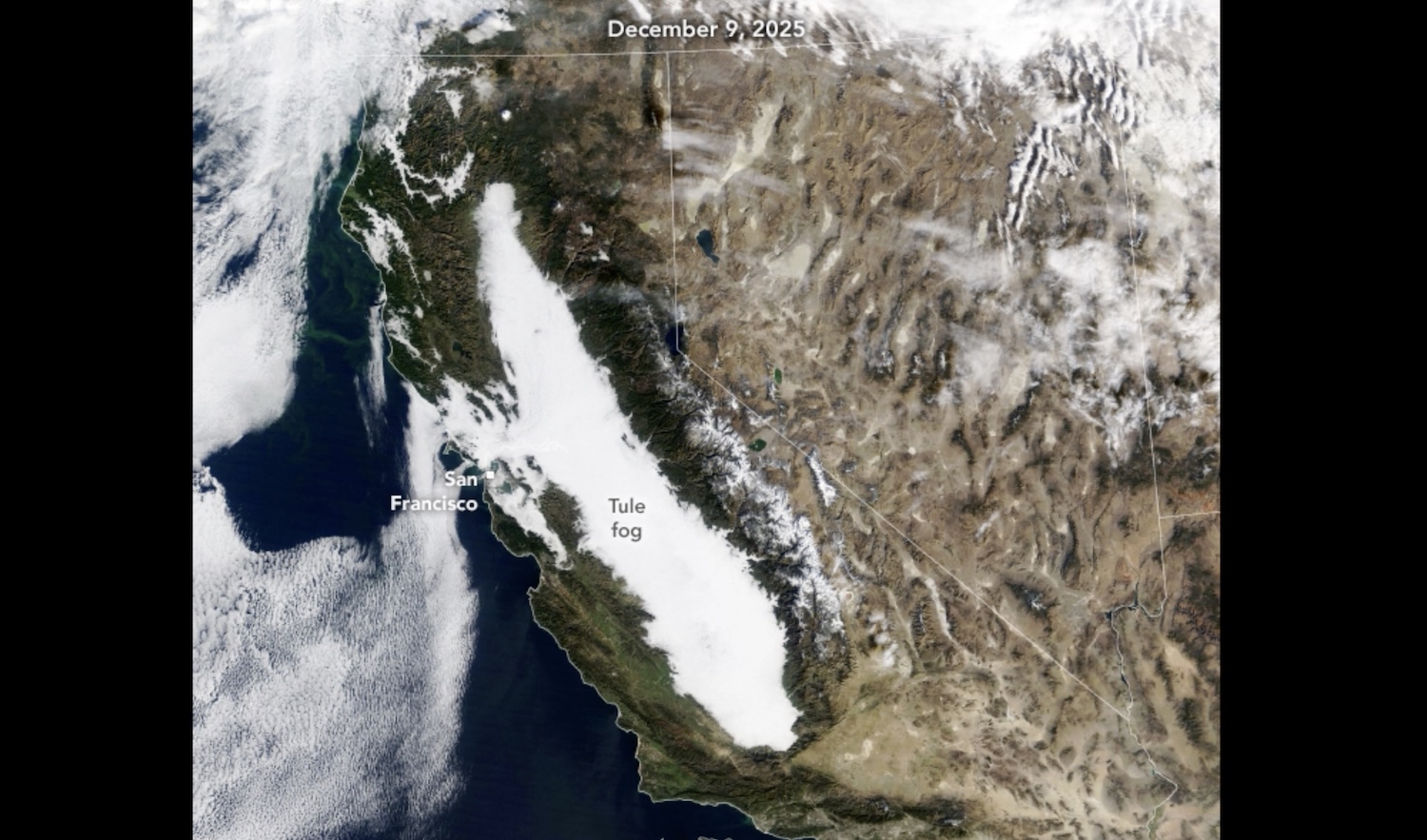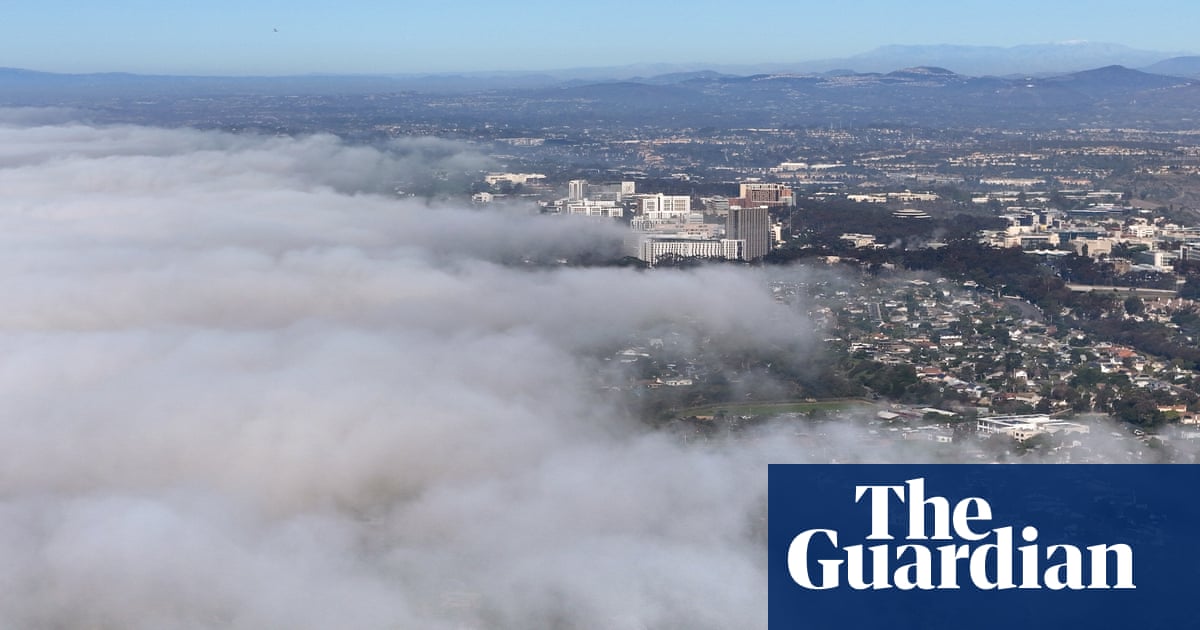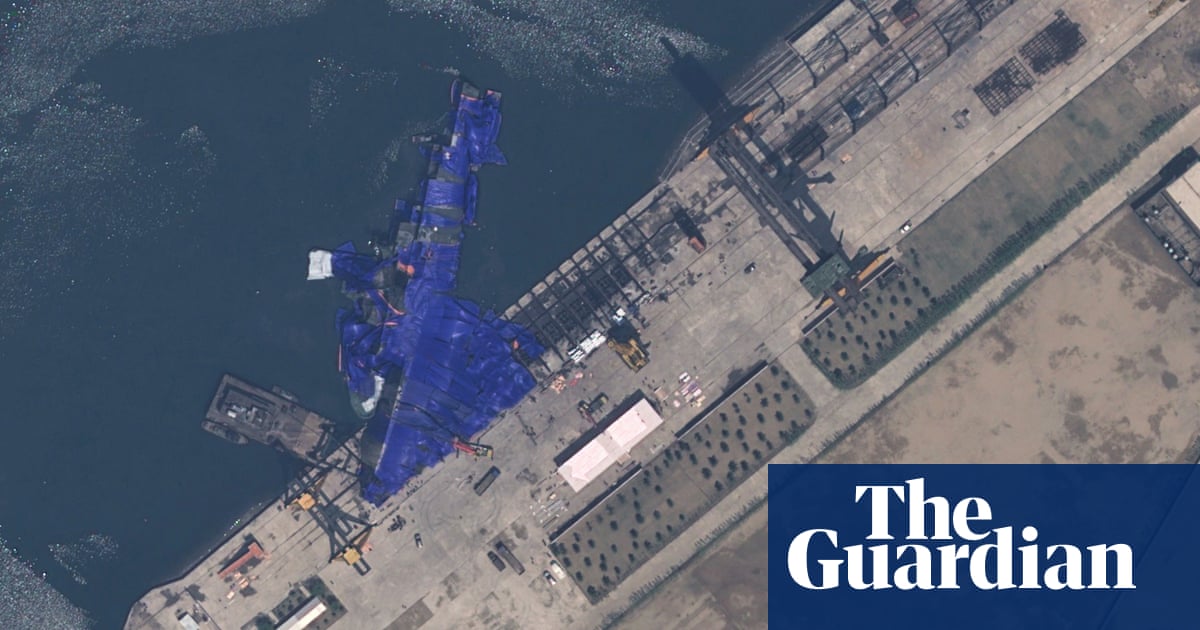#satellite-imagery
#satellite-imagery
[ follow ]
#ukraine #iran #machine-learning #russia #military-operations #north-korea #tule-fog #globalbuildingatlas #rsf
Miscellaneous
fromBusiness Insider
1 day agoSatellite images show Russia fortified a port against Ukrainian drone boats. One broke through underwater and exploded.
Ukraine used underwater drones to strike and cause an explosion at Novorossiysk port near a Kilo-class submarine, despite Russian floating barriers.
California
fromLos Angeles Times
6 days agoWith Altadena burning, L.A. County lacked satellite mapping tool used by other agencies
L.A. County Fire lacked access to the National Guard's FireGuard satellite fire-tracking data during the Eaton fire, hindering evacuation decisions and situational awareness.
fromwww.theguardian.com
1 week agoRSF massacres left Sudanese city a slaughterhouse', satellite images show
The Sudanese city of El Fasher resembles a massive crime scene, with large piles of bodies heaped throughout its streets as the paramilitary Rapid Support Forces (RSF) work to destroy evidence of the scale of their massacre. Six weeks after the RSF seized the city, corpses have been gathered together in scores of piles to await burial in mass graves or cremated in huge pits, analysis indicates.
World news
fromSFGATE
1 week agoCalifornia scientists discover 'pulse' in Earth's glaciers
Though they look still on the surface, millions of optical and radar satellite images collected from 2014-2022 reveal that the rate of each glacier's flow depends on the season and geographic location. In Arctic regions of Russia and Europe, for instance, glaciers typically reach top speeds during summer or early fall, while in Alaska, they accelerate the most during spring.
Science
fromFast Company
3 weeks agoThis project is using AI and satellite data to create the first definitive map of the entire continent of Africa
Africa's official maps are stuck in the past, often either outdated, incomplete-or both. But governments don't have the budgets to fix them, making it difficult to complete projects as complex as deciding where to put new solar plants to as simple as delivering a package. Now a new plan is underway to map the entire continent using satellite data and AI.
Artificial intelligence
Environment
fromDaily Coffee News by Roast Magazine
3 weeks agoInternational Researchers Allege Widespread Errors in Smallholder Coffee Mapping, Offer Dataset
Sample Earth provides an open-access reference dataset to prevent misclassification of smallholder coffee and cocoa farms as forests and support EU deforestation compliance.
fromwww.aljazeera.com
1 month agoYale report finds evidence of RSF mass killings in Sudan's el-Fasher
The fall of el-Fasher has resulted in the carpet-bombing of large swaths of the city by Sudan Armed Forces, an unknown number of civilian casualties caused by both sides, and almost 15 months of IPC-5 Famine conditions in areas caused by RSF's siege of the city, the HRL report said. The HRL determined this by reviewing satellite imagery and open source and remote sensing data from Monday.
World news
fromEarth911
1 month agoGuest Idea: How Communities Can View Real-Time Satellite Images to Respond to Natural Disasters
Every year, regions of the world are hit by natural disasters such as hurricanes or floods. As a result of climate change, these phenomena have not only increased in number and severity, but it has also become more difficult to predict when they might occur. Although the areas most prone to these hazards try to take proactive measures, many sources of information are not timely enough or are of limited use.
Science
fromwww.dw.com
1 month agoSudan: Mass killings prompt fears of a new Darfur genocide DW 10/29/2025
"The sick and injured were executed in cold blood," the Sudanese Coordination of Resistance Committees, a nongovernmental organization, stated two days after the Rapid Support Forces (RSF) seized control of the city of el-Fasher, the capital of North Darfur, Sudan. According to the NGO, RSF fighters had either killed everyone or left them to die in the city's Al Saudi Hospital.
World news
Miscellaneous
fromBusiness Insider
1 month agoFire, smoke, and anti-drone nets: Satellite images capture scenes from the fight engulfing Russia's oil industry
Ukrainian long-range strikes are increasingly targeting Russian oil facilities, turning the country's energy infrastructure into a battlefield and prompting improvised defensive measures.
from24/7 Wall St.
2 months agoUkraine Revealed the Future of Warfare-And No One Saw It Coming
Russia's 2022 invasion of Ukraine was supposed to be a short campaign, but the larger country's swift victory anticipated by many analysts failed to materialize. Part of the reason for Ukraine's effective defense was Kyiv's early warning of the build-up of Russian forces on its border. U.S./allied intelligence warned Kyiv, but another non-government source tipped them off to the impending invasion: commercial imagery, especially Maxar's optical photos, publicly documented the build-up and the initial invasion, revealing the long convoy heading toward Kyiv on Feb. 27, 2022.
Miscellaneous
Agriculture
fromTechCrunch
2 months agoAquawise will show off its AI-driven water quality tech at TechCrunch Disrupt 2025 | TechCrunch
Aquawise uses satellite imagery and physics-based AI to provide continuous, no-hardware water-quality monitoring, tracking, and predictions for aquaculture farms in Southeast Asia.
fromThe Art Newspaper - International art news and events
2 months agoAncient Andean hunting traps in Chile revealed by satellite imagery
"Prior to my research, fewer than a dozen such traps were known across the entire pre-Hispanic Andes," Adrián Oyaneder, author of the research paper and an archaeologist at the University of Exeter in the UK, tells The Art Newspaper. "However, in parallel with a French research team, I was able to demonstrate that these structures are heavily concentrated in the Camarones Valley, where we documented 76 examples with strong indications of at least 100 more further to the south."
Miscellaneous
fromBusiness Insider
2 months ago10 landmarks you can see from space
If you want the best view of Earth's landmarks, you'll need a ticket to space. Some of the world's most jaw-dropping sites - both natural and man-made - only reveal their true scale and beauty when captured from 250 miles overhead. The International Space Station has snapped images of some of these landmarks, such as the Great Barrier Reef, the Pyramids at Giza, and San Francisco's Golden Gate Bridge. Photos show how incredible landmarks look both from the ground and from way, way above.
Science
fromMail Online
3 months agoIncredible satellite images reveal new island formed in Alaska
But in Alaska, a new island has popped up in just four decades. The two-square-mile (five sq km) landmass, known as Prow Knob, was once entirely surrounded by the deep ice of the Alsek Glacier. But NASA has revealed that the small mountain has now been entirely surrounded by water, cutting it off from the mainland. An image taken by the Landsat 8 satellite in August shows that the mountain has now lost all contact with the Alsek Glacier.
Environment
World news
fromBusiness Insider
3 months agoSatellite images show Russia's big exploding drone factory is expanding with new buildings, defenses, and, apparently, paintball fields
Satellite imagery shows paintball fields linked to Alabuga Polytechnic at the Yelabuga drone factory, indicating training and socializing tied to drone production.
World news
fromBusiness Insider
3 months agoSatellite photos show China prepping to display a full lineup of anti-ship missiles for countering the US Navy
China will showcase advanced anti-ship missiles, land-attack cruise missiles, and other high-tech PLA systems in a September 3 parade to project regional power.
Russo-Ukrainian War
fromBusiness Insider
6 months agoSatellite images show the unusual tire tactic and fake decoy aircraft that failed to save Russia's bombers from Ukrainian drones
Russia attempted to protect its airbases from Ukraine by using deceptive tactics, including placing tires on planes and painting fake decoy aircraft.
[ Load more ]






